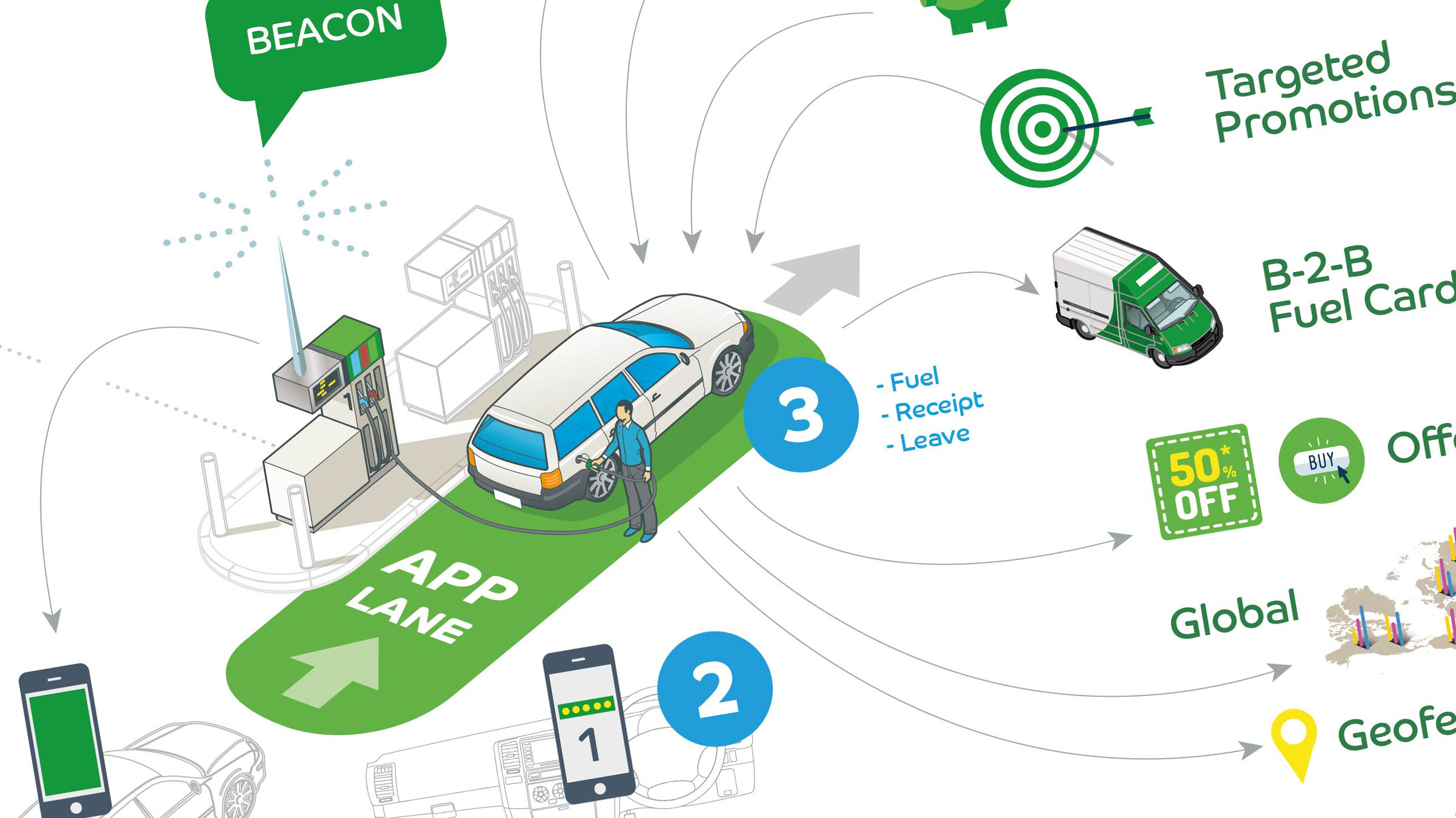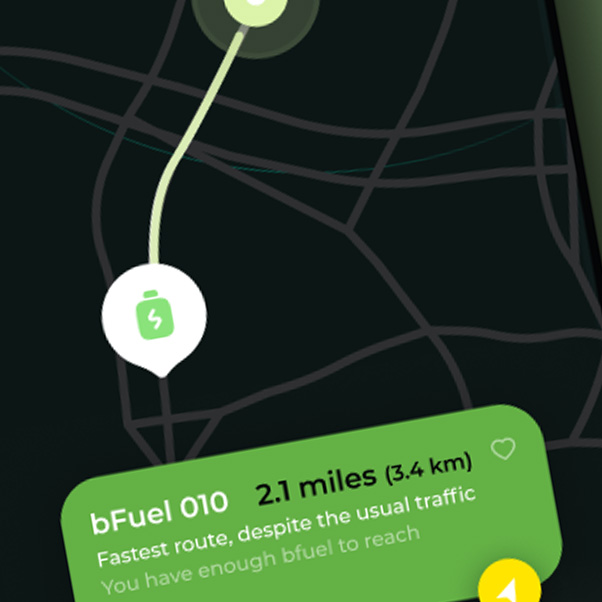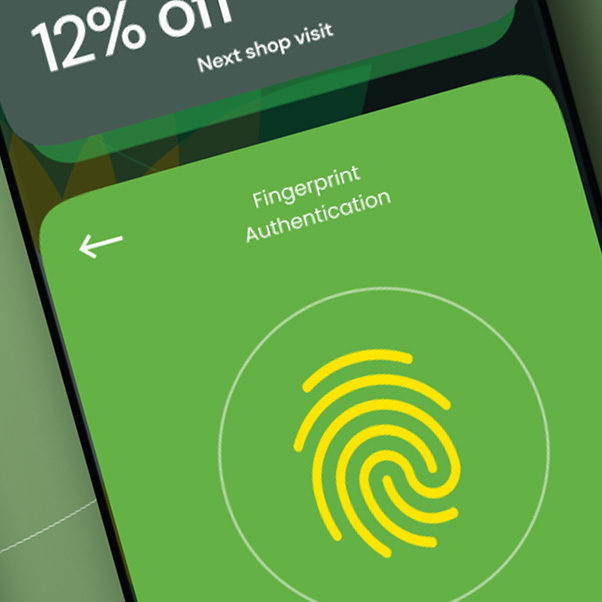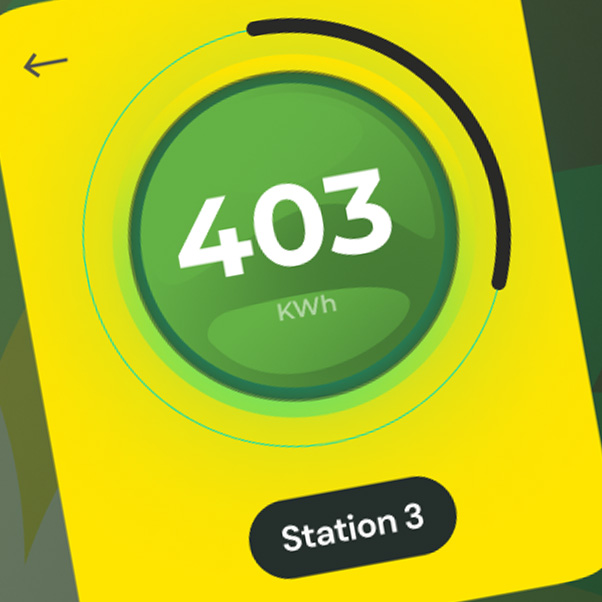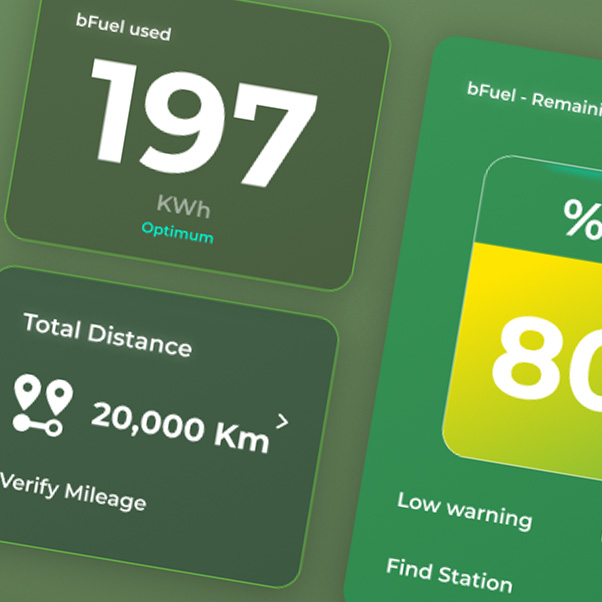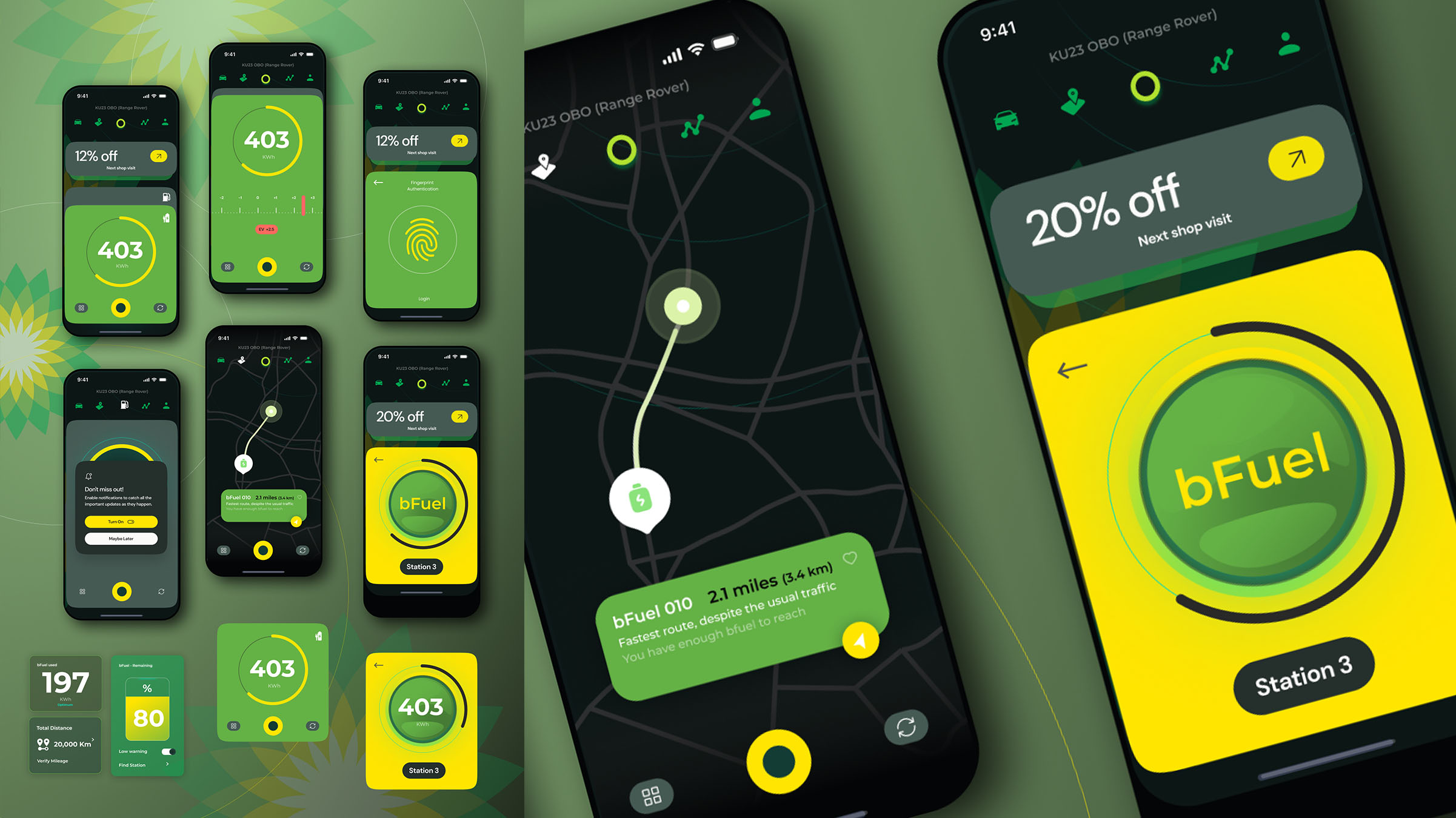
Overview
Concept, innovation, visualisation and delivery
Nobody likes paying for fuel, especially with the rising cost of living. How as a major fuel supplier do you drive positive brand engagement and fuel loyalty in today’s economy? and with electric vehicle ownership on the rise, shorter average trip distances, and the ability to fuel at home, traditional fuel stations are becoming obsolete.
Can loyalty be achieved without a physical presence? Are complicated and expensive loyalty programs effective? How do you gain customer loyalty in a fast-changing, cost-driven market saturated with competitors?
I didn't have the answers, but my team always loved a challenge...
We designed and built a new innovation we called 'bFuel', a customer led synergy between finance and fuel. bFuel is a platform on which BP customers can pre-buy designated amounts of fuel at a reduced cost, benefitting from a discount across 3/6/12 month contract periods. The system allows users to 'draw down' fuel as required using an app in real-time against their remaining litres from any BP fuel staion across their region. The app also uses the data from usage to serve offers and discounts, without any 3rd party loyalty system or partner. Simply arrive at a fuel station, open the bFuel app, confirm pump number, fuel and GO.
Challenge
Deliver an innovative concept for BP that delivers the holy grail of fuel businesses "Brand Fuel Loyalty"
Adding to the complexity, my team and I were part of a broader Barclaycard sales initiative to recapture and renegotiate BP as a banked client. We didn't control the conversation and had to carefully position our output and approach. This was crucial, as financial conduct rules prohibited us from delivering any outcomes that constituted advice.
I was required to deliver on the BP brief, as well as navigate and deliver against my parent companies need, to be part of the sell in securing BP as a client moving forward. Proving and proividing best in class design led thinking processes to both parties.
Approach
The project required deep discovery to explore users behaviour and attitudes toward the proposition of "Fuel Loyalty", what they were doing currently in relation to fuel purchase and whether they were open/willing to the issue.
Leading a dedicated team of UX and UI designers, business architects and project management a set of agile sprints were conducted across a 6-week period, focusing on innovating for "Fuel Loyalty."
We collected existing research, integrated internal bank data, conducted independent research and consumer testing at BP forecourts across the UK to ensure we underdstood customer attitudes and sentiment.
I delivered this insight to stakeholders as part of the output from each sprint, discussed and constantly refind our approach based on the outcome. This drove a trusted position for design, delivering benefit throughout the project, building relationships and allowing control of the project narrative. Ultimately gaining a seat at the CSuite, ensuring a voice and representation for Barclaycard, design and the wider project team.
Outcome of the research led us to believe that we needed to go beyond marketing, branding, loyalty programs, and even forecourt operations to find where BP could have a relevant brand conversation around loyalty. We examined fuel site delivery, bunkering, fuel purchasing (oil/refinement/market supply and demand), and the entire product and service delivery process. I identified numerous opportunities for Barclaycard products and services to boost loyalty-focused sales, through cost efficiencies in provisioning and the supply chain.
I took a pragmatic, flexible and structured approach to navigate the complex matrix stakeholder engagement within BP. This included ensuring a common set of design principles, to guide the concepts and maintain a focus on deviations from brief and mitigations, stakeholder expectations and brand. This process also gave us an understanding of whether concepts and outcomes were to be accepted as a business case, allowing for ongoing feasibility of the initial request, any change was affected through data led challenge and refinement of the brief.
Following examination of the brief it was evident that the project also had to encompass building trust and earning the right to engage in meaningful conversations with customers. Attracting customers to BP fuel stations was just one part of the broader need for more direct customer engagement.
This was especially evident within the behavioural research and mapping carried out, which set out where a conversation would need to happen pre / during and post project, along with the tools and techniques needed to move existing rerlationship and behaviour towards fuel. For example when mapping personas it was clear that three categories of customer need exisited. These broke down in simple terms as Sign-Posting, Helping hands and steps to change.
I developed a robust maturity matrix based on project strategy and design principles. This provided a live overview of every decision, move, clarification, or deviation, ensuring focus on essential tasks. It served as our core metric for demonstrating ROI, validating our involvement, and adhering to the commercial business case. By reflecting deviations and customer needs, the matrix helped in understanding risk, control, and governance decisions, ensuring balanced customer and commercial outcomes with clear parameters for future changes or mitigations.
Technical and delivery feasibility were as important as innovation, requiring a solution that was simple, effective, and added minimal technical debt to existing systems. This led to the development of a self-contained, easy-to-rollout integrated proposition.
The entire app and digital ecosystem, including the backend, were built on a full-stack, no-code platform. This enabled rapid design, development, testing, and launch of a production-grade application, meeting the technical briefing requirements. This approach allowed us to build based on actual needs rather than assumptions. The project stayed within time and cost parameters, resulting in a fully functional bFuel proposition ready for market testing.
Beacon technology was deployed to connect user devices with central BP systems using customer data and connectivity. This allowed for rapid, cost-effective beacon deployment at pump locations, with integration occurring outside of BP's existing network and infrastructure. The system only interacted with BP's backend when necessary for spend, drawdown, and reconciliation.
UI design, UX mapping, and wireframing were conducted alongside research and testing, enabling rapid iteration and delivery of focused designs. These designs were continuously integrated into the no-code system for use in live research and test sessions, ensuring comprehensive feedback and immediate iteration. This approach ensured a pragmatic, flexible, and structured process for design, testing, and building.
Outcomes
bFuel answered the question of how do you drive Brand Loyalty in fuel supply, successfully meeting all project goals. Producing a working, tested and LIVE bFuel proposition.
Design as a function played a crucial role in securing BP for a new engagement period and was commended for ensuring all design, innovation, and customer interactions were grounded in a commercial framework. Running a real-time, commercially focused project alongside a pitch for continued business demonstrated Barclays' commitment to delivering financial products and services that drive client success.
I upskilled over 40 BP and Barclaycard staff in Design Thinking, receiving recognition for driving business transformation through this approach. The work was commended for its speed, accuracy, and relevance.
I was able to bring my influence as a design leader to affect working practises and embed design thinking in a large matrix organisation.
The work completed enabled BP to run the initiative as a test and learn, avoiding a large budget commitment without understanding customer sentiment towards loyalty or willingness to change behavior. Localised testing revealed it was too early for a live launch, as current fuels (petrol/diesel) couldn't justify a major change in delivery and supply infrastructure required to make bFuel viable. However, the model showed high acceptance and uptake when applied to electricity as the fuel of choice. Initially taken offline, the project has now become viable.
Enabled data driven insights for continuous improvement by define metrics to measure the success of customer journey
The one-to-one nature of the app provides invaluable direct connection between corporate and consumer. The data gathered from the test revealed a level of detail and real-time understanding that BP had previously been unable to achieve.
Our data and insights have informed and driven a potential new set of projects focused on fuel companies transitioning to become suppliers for electric and electric vehicles. This reimagines the forecourt as wherever you plug-in, centralising customer engagement and brand loyalty through apps such as bFuel. The initiative includes pre-purchasing electricity supply and enabling access from both home and fuel stations. Electricity, as a commodity requiring no storage or delivery network (bunkering), could be seamlessly integrated into a bFuel style app, enhancing convenience and accessibility for customers.
Role
Head of Interaction Design / Creative Direction / Player-Coach / Concept / UI / UX / Research / Strategy
Team
Digital strategist / Digital Product manager / Business Manager / Account Director
Company
Barclaycard Business Services
